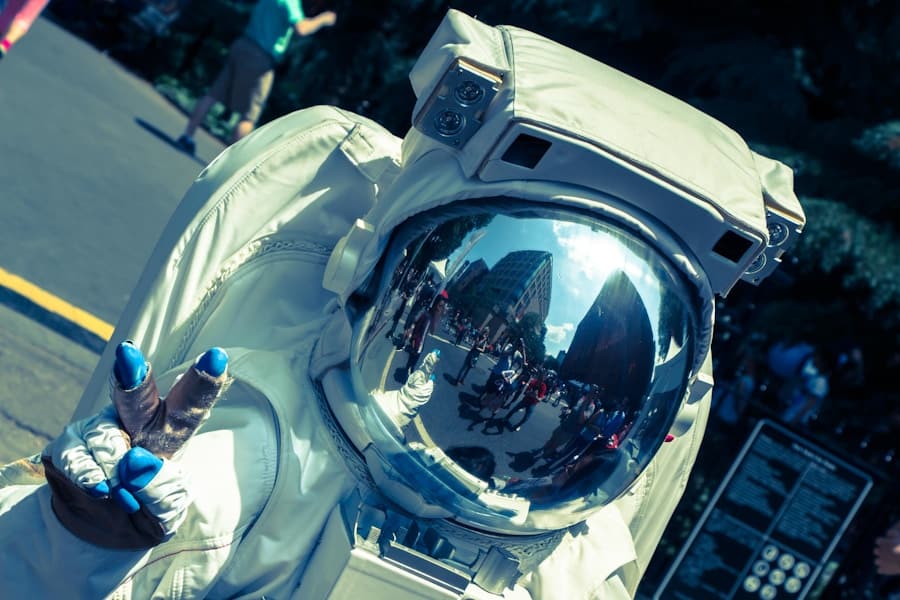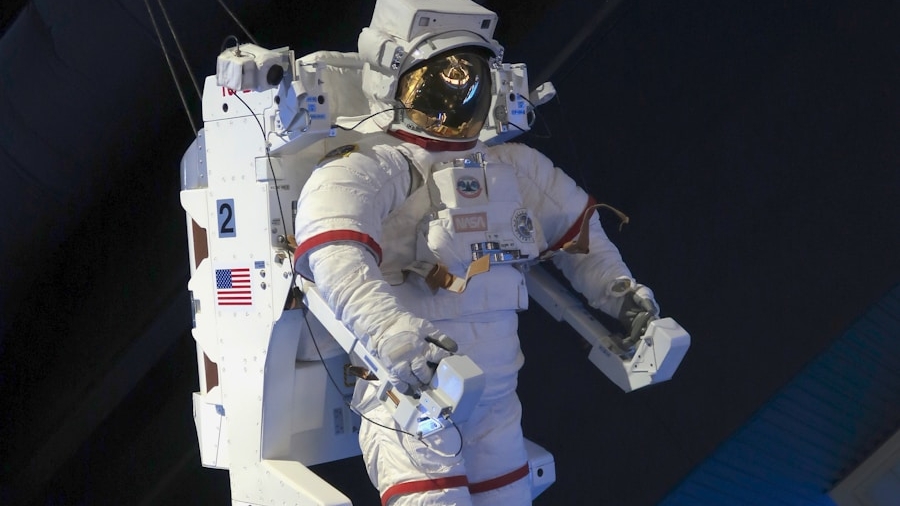The exploration of outer space has long captivated human imagination, and as we venture further into the cosmos, the need for advanced technologies becomes increasingly critical. Among these technologies, artificial intelligence (AI) and robotics have emerged as pivotal players in enhancing the safety and efficiency of spacewalks, or extravehicular activities (EVAs). Spacewalks are essential for a variety of tasks, including maintenance of spacecraft, installation of new equipment, and scientific research.
However, they also pose significant risks to astronauts due to the harsh environment of space, which includes extreme temperatures, radiation exposure, and the vacuum of space itself. The integration of AI and robotics into these operations not only aims to mitigate these risks but also to optimize the overall performance of astronauts during EVAs. AI systems can process vast amounts of data in real-time, enabling them to assist astronauts in decision-making and problem-solving during critical moments.
Robotics, on the other hand, can perform tasks that are either too dangerous or too complex for humans. Together, these technologies are revolutionizing how spacewalks are conducted, making them safer and more efficient. As we delve deeper into the roles that AI and robotics play in spacewalks, it becomes evident that their contributions are not merely supplementary; they are becoming integral to the future of human space exploration.
Key Takeaways
- AI and robotics play a crucial role in enhancing safety and efficiency during spacewalks, making them an integral part of space exploration.
- AI technology is used to analyze and predict potential hazards during spacewalks, providing real-time assistance to astronauts and ensuring their safety.
- Robotics have advanced to assist astronauts in performing complex tasks during spacewalks, such as repairs and maintenance, improving the overall success of missions.
- The integration of AI and robotics in spacewalks has significantly improved the accuracy and efficiency of tasks, reducing human error and increasing productivity.
- AI and robotics have revolutionized astronaut training for spacewalks, providing realistic simulations and scenarios to better prepare them for the challenges of working in space.
The Role of AI in Spacewalk Safety
Safety in Spacewalks
AI’s Role in Enhancing Safety Protocols
AI plays a vital role in ensuring safety during spacewalks by providing real-time monitoring and predictive analytics. By analyzing environmental data from sensors on the International Space Station (ISS) or other spacecraft, AI systems can identify potential hazards such as micrometeoroid impacts or solar radiation levels.
Real-time Monitoring and Alert Systems
AI continuously monitors environmental variables, alerting astronauts to changing conditions that may require immediate action or adjustments to their tasks. This enables astronauts to respond promptly to potential hazards, ensuring their safety during spacewalks.
Emergency Response and Troubleshooting
In emergency situations, AI can simulate various scenarios and suggest optimal responses based on historical data and machine learning algorithms. For instance, if an astronaut encounters a malfunction with their suit or equipment during a spacewalk, an AI system can quickly analyze the situation and recommend troubleshooting steps or alternative actions. This capability not only enhances the astronaut’s ability to respond effectively but also reduces their cognitive load during high-stress situations, allowing them to focus on executing their tasks safely.
Advancements in Robotics for Spacewalk Operations

Robotic technology has made significant strides in recent years, particularly in its application to spacewalks. One notable advancement is the development of robotic arms and manipulators that can perform intricate tasks with precision. These robotic systems are designed to work alongside astronauts, taking on tasks that require fine motor skills or heavy lifting that would be challenging for humans in a spacesuit.
Additionally, advancements in autonomous robotics have led to the creation of robots capable of conducting spacewalks independently. The European Space Agency’s (ESA) “European Robotic Arm” is designed to operate on the Russian segment of the ISS and can perform various tasks without direct human control.
This capability not only reduces the risk to astronauts but also allows for more complex operations to be carried out simultaneously. As these robotic systems become more sophisticated, they will increasingly take on roles traditionally reserved for human astronauts, thereby enhancing overall mission success.
How AI and Robotics Improve Efficiency and Accuracy in Spacewalks
The integration of AI and robotics into spacewalk operations significantly enhances both efficiency and accuracy. AI algorithms can optimize task planning by analyzing mission objectives and available resources, allowing astronauts to prioritize their activities effectively. For example, during a spacewalk involving multiple tasks such as equipment repairs and scientific experiments, AI can help determine the most efficient sequence of operations based on time constraints and environmental conditions.
Robotics also contribute to improved accuracy in executing tasks during EVAs. With advanced sensors and feedback mechanisms, robotic systems can perform delicate operations with a level of precision that surpasses human capabilities. This is particularly important when handling sensitive equipment or conducting experiments that require exact measurements.
By delegating such tasks to robots, astronauts can focus on more complex problem-solving activities that require human intuition and creativity.
The Impact of AI and Robotics on Astronaut Training for Spacewalks
The introduction of AI and robotics into spacewalk operations has also transformed astronaut training programs. Traditional training methods often involve simulations and physical exercises designed to prepare astronauts for the challenges they will face during EVAs. However, with the advent of AI-driven training tools, astronauts can now engage in more immersive and adaptive training experiences.
Virtual reality (VR) environments powered by AI can simulate various scenarios that astronauts might encounter during a spacewalk, allowing them to practice their responses in a safe setting. Furthermore, AI can analyze an astronaut’s performance during training sessions, providing personalized feedback and identifying areas for improvement. This data-driven approach enables trainers to tailor their programs to meet the specific needs of each astronaut, ensuring they are well-prepared for the unique challenges of spacewalks.
As training becomes more sophisticated through the use of AI and robotics, astronauts will be better equipped to handle unexpected situations during actual missions.
Overcoming Challenges and Limitations in Implementing AI and Robotics in Spacewalks

Environmental Factors
One significant hurdle is the reliability of these technologies in the harsh environment of space. Space is characterized by extreme temperatures, radiation exposure, and microgravity conditions that can affect the performance of both AI systems and robotic hardware. Ensuring that these technologies can withstand such conditions without failure is paramount for mission success.
System Integration
Another challenge lies in the integration of AI and robotics with existing systems aboard spacecraft. Many current missions rely on legacy technology that may not be compatible with newer AI-driven solutions.
Ethical Considerations
Additionally, there are concerns regarding the ethical implications of relying heavily on AI for critical decision-making processes in high-stakes environments like space.
Future Developments and Possibilities for AI and Robotics in Spacewalks
Looking ahead, the future of AI and robotics in spacewalks holds immense potential for further advancements. One area ripe for exploration is the development of fully autonomous robotic systems capable of conducting complex EVAs without human intervention. Such robots could be deployed for routine maintenance tasks or even exploratory missions on celestial bodies like Mars or asteroids, where human presence may be limited or impractical.
Moreover, as machine learning algorithms continue to evolve, we can expect AI systems to become even more adept at predicting potential hazards and optimizing mission parameters based on real-time data analysis. This could lead to a new era of proactive safety measures during spacewalks, where potential issues are identified before they escalate into emergencies. The combination of enhanced robotics with advanced AI capabilities will likely redefine how we approach not only spacewalks but also broader aspects of human space exploration.
The Continued Evolution of Spacewalk Safety and Operations with AI and Robotics
The integration of AI and robotics into spacewalk operations represents a significant leap forward in ensuring astronaut safety and mission success. As these technologies continue to evolve, they will play an increasingly vital role in shaping the future of human exploration beyond Earth’s atmosphere. From enhancing safety protocols to improving training methodologies, the impact of AI and robotics is profound and far-reaching.
As we stand on the brink of new discoveries in our quest to explore the universe, it is clear that embracing these advanced technologies will be essential for overcoming the challenges that lie ahead. The continued evolution of spacewalk safety and operations through AI and robotics not only promises to enhance our current capabilities but also opens up exciting possibilities for future missions that may one day take us beyond our solar system.
If you’re interested in the latest technology trends, you may also want to check out this article on the best laptop for architects. Just like how AI and robotics are revolutionizing spacewalk safety and operations, architects are also benefiting from cutting-edge technology to enhance their work efficiency and creativity.
FAQs
What is the role of AI and robotics in spacewalk safety and operations?
AI and robotics play a crucial role in enhancing spacewalk safety and operations by providing advanced tools and technologies to assist astronauts in performing tasks, analyzing data, and mitigating risks in the harsh environment of space.
How does AI contribute to spacewalk safety?
AI contributes to spacewalk safety by enabling real-time monitoring of astronaut health and environmental conditions, predicting potential hazards, and providing autonomous decision-making capabilities to respond to emergencies.
What are the benefits of using robotics in spacewalk operations?
Robotics in spacewalk operations can assist astronauts in performing complex tasks, such as repairs and maintenance, with greater precision and efficiency. They can also reduce the physical strain on astronauts and extend the duration of spacewalks.
How do AI and robotics improve efficiency in spacewalk operations?
AI and robotics improve efficiency in spacewalk operations by automating routine tasks, analyzing large volumes of data to support decision-making, and enabling remote operation of robotic systems from mission control centers on Earth.
What are the challenges in integrating AI and robotics into spacewalk operations?
Challenges in integrating AI and robotics into spacewalk operations include ensuring the reliability and safety of autonomous systems, addressing communication delays in remote operation, and designing robots that can withstand the extreme conditions of space.

